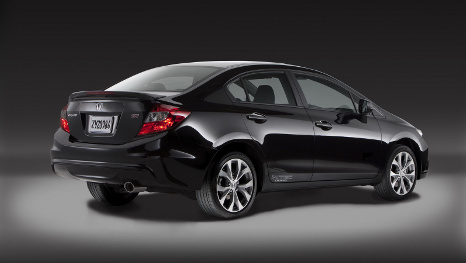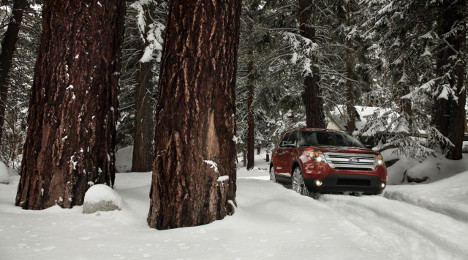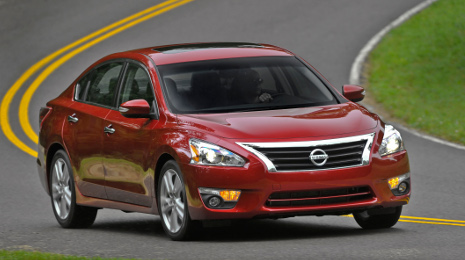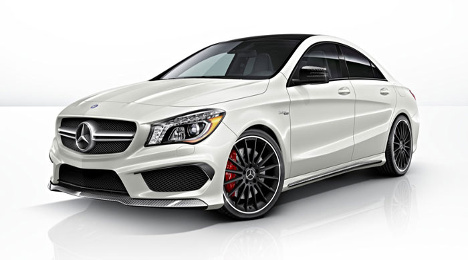Both used- and new-vehicle retail sales are moving higher, but the annual automotive report associated with the American Customer Satisfaction Index (ACSI) showed consumer satisfaction softened for the second year in a row.
Mentioning widespread decline among a wide array of brands, the 2014 ACSI Automobile Report indicated diminishing customer satisfaction produced an overall ACSI score of 82, marking a 1.2-percent decline from a year earlier.
Among the 21 nameplates tracked by the ACSI, analysts noted 80 percent lost ground in customer satisfaction, with only 10 percent improving and another 10 percent holding steady compared to a year ago.
“The domestic car industry overall fells to a five-year ACSI low, although the gap to imports actually narrowed a bit because both Japanese and European nameplates declined even further,” analysts said in the report.
For 2014, the top automakers in customer satisfaction are a mix of luxury and Japanese brands.
Mercedes-Benz held on to the lead despite a small drop to an ACSI score of 86, followed by Subaru at 85.
Lexus slipped for a second straight year, falling 3 percent to tie Volkswagen, which is unchanged at 84.
Toyota and Honda also retreated 3 percent to tie Buick at 83, the only domestic badge above the industry average.
“A considerable investment in Buick appears to be paying off for General Motors. Sales are up 12.5 percent for the first half of the year — the largest increase for any GM car — led by a surge in sales for Buick Encore,” report authors said.
Most of the remaining brands came in at, or just below, the industry average, according to analysts.
GMC dipped 4 percent to an ACSI score of 82, tying Chevrolet, (which rose 4 percent) and Kia (which stayed unchanged). Ford, Nissan, Hyundai and Chrysler settled next at 81.
At 80, Mazda and BMW joined Cadillac, which dropped 6 percent year-over-year and joined Acura as the only luxury badges with lower year-to-date sales compared with the same period in 2013, according to report authors.
At the bottom of the ACSI rankings were two Chrysler brands (Jeep at 79 and Dodge at 78) and two imports brands (Audi at 79 and Acura at 77).
“Considering domestic automakers only, all of Detroit’s Big 3 exhibit declines in overall customer satisfaction, but GM (82) now ranks above Ford (81), despite a record number of high-profile recalls,” report authors said.
The report pointed out that ACSI data showed that frequent or widespread recalls usually contribute to customer dissatisfaction. Vehicle owners who had at least one recall in the past year rate their vehicle 6 percent lower than those who did not experience a recall.
“In the case of GM, many of the recalls concerned older models, whereas ACSI tracks cars purchased within the past three years,” report authors said.
The 2014 ACSI Automobile Report is based on interviews with 4,360 customers, chosen at random and contacted via telephone and email between April 22 and May 29.
Customers are asked to evaluate their recent purchase and experiences with automobiles manufactured by the largest companies in terms of market share, plus an aggregate category consisting of “all other” and thus smaller nameplates.
“The survey data are used as inputs to ACSI’s cause-and-effect econometric model, which estimates customer satisfaction as the result of the survey-measured inputs of customer expectations, perceptions of quality, and perceptions of value,” authors said.
“The ACSI model, in turn, links customer satisfaction with the survey-measured outcomes of customer complaints and customer loyalty. ACSI subscribers receive confidential industry-competitive and best-in-class data on all modeled variables and customer experience benchmarks,” they went on to say.
The soft automotive report led to a national ACSI score dip. The second-quarter report contained a drop of another 0.1 percent to 76.1 on a 100-point scale after experiencing a precipitous 0.8 percent decline in the prior quarter.
"The ongoing erosion in customer satisfaction does nothing to help the economy's ability to generate consumer demand,” ACSI chairman and founder Claes Fornell said. “There are already signs that sales of durable goods are slowing down, with the auto industry experiencing slower growth in new-car sales this year compared to a year ago.”
While the rate of decline in overall customer satisfaction is not as severe as it was in the first quarter, Fornell explained the index continues to trend downward at a time when economic growth needs to pick up pace.
“Based on the new ACSI results, growth in consumer spending will continue to be curtailed as weak customer satisfaction deters repeat buying and low consumer discretionary income inhibits first-time purchases,” Fornell said.
Even though gas prices have been on the way down for almost two months straight and sit much lower than rates seen at the pump last year, it seems consumers are still turning toward the smaller, more fuel-efficient segments when looking for a used vehicle.
Analysts at Kelly Blue Book point out interest in the compact car segments is being pushed in part this summer by the new stream of off-lease popular smaller models, such as the Honda Civic.
According to used-car shopping data in KBB’s July Blue Book Market Report, the compact car segment was the most-shopped vehicle segment in the West and Northeast regions for the month for both used and certified pre-owned vehicles.
And the same segment ranked second in popularity among the Midwest and South territories for both used and CPO shoppers, following the midsize car segment.
On a national scale, the compact car segment is the most popular for used shoppers with 15.5 percent of KBB site traffic. The segment filled the No 2. Spot for CPO shoppers.
Midsize cars came in as the most popular segment overall in July for CPO buyers across the nation with 12.8 percent of KBB site traffic, but the compact cars were close behind with a score of 12.5.
What’s driving strong consumer interest in this segment? Signs point to the ever-popular Civic, KBB analysts pointed out.
The vehicle was redesigned in 2012, and these off-lease models are now hitting the market, “prompting a surge of research for the vehicle,” according to KBB site traffic.
The Toyota Corolla and Volkswagen Jetta are also impacting the used and CPO market for similar reasons.
Though compact cars and midsize cars held the No. 1 and No. 2 spots in July for popularity on KBB’s site, the tides turned for the third position.
For CPO shoppers, the third most popular segment was the midsize SUV/crossover segment with 10.8 percent of the site’s traffic, while the full-size pickup truck segment was in the No. 3 spot for used-vehicle shoppers (11 percent).
The National Insurance Crime Bureau announced its Hot Wheels report this week, the bureau’s annual release of the ten most stolen vehicles in the United States.
The list features a perfect split between import and domestic automakers, with Honda’s Accord and Civic topping the list. Full-size pickups made up a considerable chunk of the list, taking the Nos. 3, 4 and 6 spots. Two other Japanese automakers also made the list with two from Toyota and one from Nissan. The following lists include figures with total thefts based on data submitted by law enforcement to the National Crime Information Center.
NICB’s 2013 Hot Wheels Top-Ten Most Stolen in the U.S.
- Honda Accord (53,995)
- Honda Civic (45,001)
- Chevrolet Pickup, Full Size (27,809)
- Ford Pickup, Full Size (26,494)
- Toyota Camry (14,420)
- Dodge Pickup, Full Size (11,347)
- Dodge Caravan (10,911)
- Jeep Cherokee/Grand Cherokee (9,272)
- Toyota Corolla (9,010)
- Nissan Altima (8,892)
The report also included the top 10 model-year 2013 vehicles stolen in the same year.
NICB’s 2013 Hot Wheels Top-Ten Most Stolen MY 2013s in 2013 in the U.S.
- Nissan Altima (810)
- Ford Fusion (793)
- Ford Pickup, Full Size (775)
- Toyota Corolla (669)
- Chevrolet Impala (654)
- Hyundai Elantra (541)
- Dodge Charger (536)
- Chevrolet Malibu (529)
- Chevrolet Cruze (499)
- Ford Focus (483)
To read the full report, click here.
When it comes to the hottest used-car models among consumers, the name of the game appears to be reliability.
That’s according to Kelley Blue Book, which provided Auto Remarketing with a list of the 25 most sought-after used vehicles on its website, and an explanation as to why the handful of cars at the top have such a stranglehold on popularity rankings.
The top four vehicles in June — the Honda Civic, Honda Accord, Toyota Camry and Toyota Corolla, respectively — were unchanged from May.
“Proving that used-car shoppers are looking for the vehicles with the best reputation, there is once again very little movement in most-shopped used models month-over-month,” KBB analysts said.
They continued: “With the top five models being two Hondas, two Toyotas and a Nissan, it’s clear to see what consumers perceive to be reliable vehicles.”
The complete list of the top 25 most popular used models on KBB.com is below, along with each vehicle’s respective monthly movement within the rankings:
1 0 Honda Civic
2 0 Honda Accord
3 0 Toyota Camry
4 0 Toyota Corolla
5 2 Nissan Altima
6 (1) Jeep Wrangler
7 (1) BMW 3 Series
8 1 Honda CR-V
9 (1) Ford Mustang
10 1 Ford Escape
11 (1) Volkswagen Jetta
12 0 Jeep Grand Cherokee
13 0 Ford Focus
14 0 Mazda MAZDA3
15 0 Toyota RAV4
16 0 Ford Explorer
17 2 Ford F150 SuperCrew Cab
18 2 Toyota Prius
19 (1) Honda Odyssey
20 (2) Ford Fusion
21 0 Subaru Forester
22 0 Ford F150 Super Cab
23 0 Toyota Highlander
24 1 Honda Pilot
25 (1) Volkswagen Passat
Along with making its projection for this month’s new-vehicle sales total, Kelley Blue Book revealed this year’s list of what editors believe are the 10 Coolest Cars Under $18,000.
Headlining this year’s group, along with being featured on KBB’s annual affordable “cool cars” list every year of the vehicle’s 11-year existence, was the redesigned Mazda3.
Two criteria — fun to drive and fun to own — are critical among the deciding factors of what the editors freely admit is a very subjective “cool factor.” Editors indicated that “cool factor” is the over-arching No. 1 criterion for a vehicle to place on this list.
Each vehicle is available for purchase at $18,000 or less, according to Kelley Blue Book's exclusive Fair Purchase Price as the yardstick.
“Low-priced new cars are getting cooler with each passing year and the mass-appeal, bread-and-butter small cars are becoming increasingly stylish and tech-savvy,” said Jack Nerad, executive editorial director and executive market analyst for Kelley Blue Book.
“On the strength of a well-received redesign for 2014, the Mazda3, which could be called king of the Coolest Cars Under $18,000, reclaims its spot at the top of our annual list,” Nerad continued. “Stylish and fun from day one, the Mazda3’s engineering innovation that results in great benefits like high fuel efficiency and fun to drive make it cooler than ever.”
Here is the complete list of KBB’s 10 Coolest New Cars Under $18,000
1. Mazda3
2. Hyundai Veloster
3. Kia Soul
4. Honda Civic Coupe
5. Volkswagen Jetta
6. Fiat 500
7. Dodge Dart
8. Ford Fiesta
9. Chevrolet Sonic
10. Nissan Versa Note
June New-Car Sales to Soften
KBB indicated new-vehicle sales for June are expected to fall 2.7 percent year-over-year to a total of 1.36 million units, resulting in an estimated 16.3 million seasonally adjusted annual rate (SAAR).
That projected SAAR level is up from 15.8 million in June of last year but down from 16.7 million last month.
Kelley Blue Book senior analyst Alec Gutierrez also noted retail sales are expected to account for 83 percent of volume in June.
“A total of 1.36 million units sold this month will bring the number of units for the first half of 2014 to 8.1 million units, a 3.5 percent increase from last year,” Gutierrez said.
“Following a slow start to the year, second-quarter totals will hit nearly 4.36 million, a 5.5 percent increase from the second quarter of 2013 and also the best second quarter since 2006,” he continued. “At this rate, the 16.3 million SAAR expected in June will be the third month above 16 million SAAR in the past four months, showing strong momentum heading into the second half of the year.”
While sales are expected to slow in June, Kelley Blue Book continues to see positive growth for Chrysler and Nissan.
Gutierrez pointed out that both automakers have experienced strong sales this year, and the two combined have driven more than half of the industry’s year-to-date sales growth.
“One of the greatest sales declines may come from Ford, which is preparing to restructure its F-Series factories in preparation for the new aluminum-bodied truck later this year,” Gutierrez said.
“By implementing changes to its factories, Ford will need to ensure it has enough inventory to last through the transition, potentially pushing sales down in the near-term,” he added.
KBB also highlighted the fastest-growing segment in June continues to be the compact SUV/crossover segment, which may pass full-size pickup trucks this year to become the third-largest segment in the industry.
Helped by models such as the Nissan Rogue and Subaru Forester, analysts noted vehicles in this segment are spending an average of 47 days in inventory, compared to the industry average of 66 days.
KBB also expects full-size pickup trucks to report the largest decline of all major vehicle segments, which could be driven by Ford’s upcoming F-Series redesign and the manufacturer’s need to maintain inventory during the factory retooling.
“While Ram sales have been strong (up 21 percent for the year), sales of the new Chevrolet Silverado have been tepid (down 1 percent),” analysts said.
Most recent college graduates these days have less room for spending than in years past due to rising higher education costs and significant student loans.
And Millennials are playing it thrifty these days when it comes to vehicle purchases, says a recent Cars.com blog post found on its DealerADvantage site.
According to the blog post, the majority of Millennial car shoppers browsing vehicles on Cars.com want to purchase a vehicle under $20,000.
“As recent graduates begin their careers and consider purchasing a new car, the majority will focus on affordability first and foremost,” said Jesse Toprak, chief analyst for Cars.com. “Millennials know they have options, and they rely on their smartphones more than any other generation to make sure they’re getting the best deal they can while on the lot. Retailers would be wise to take note and prepare to work with this well-informed, tech-savvy group of car buyers.”
Breaking the age groups down even more, approximately 70 percent of Millennials on the site, ages 21 to 24, are looking for a vehicle under $20,000.
This number shifts down to 55 percent for those ages 21-35.
This price range makes the compact segment particularly attractive, Toprak pointed out — and this perhaps means that dealers would be well advised to showcase these models to younger buyers.
“Compact car segment is the top choice for the Millennials as the models in this category nicely fit the needs of the first-time buyers with their low cost of ownership and increasingly seamless integration of digital lives to the built-in infotainment systems,” added Toprak.
Beside price concerns, the blog post pointed out that Millennials employ a few other saving tactics, as well.
First,these shoppers are more likely than those over 35 to visit an additional dealership should they find a better-price car nearby.
They are also more likely to perform a wide variety of research tasks on the lot than older shoppers, the site pointed out.
This ties in to the next trend that Cars.com found: Almost two-thirds (65 percent) of Millennials (ages18-34) use a smartphone for research prior to a dealer visit.
And these younger buyers will also be using these tools on the lot, as they make sure they are getting the best deal they can.
Mobile research tasks can include reading online reviews and accessing information about vehicle payments and offers, Cars.com analysts said.
To give dealers an idea of what cars these younger shoppers might be looking for, Cars.com compiled some of its best-selling inexpensive models.
The following is a list of top-selling new vehicles on Cars.com — based on year-to-date sales — that fall within the $20,000 price range:
1. Toyota Corolla
2. Honda Civic
3. Nissan Sentra
4. Mazda3
5. Kia Soul
6. Ford Fiesta
7. Chevrolet Sonic
8. Nissan Versa
9. Honda Fit
10. Kia Forte
To view the original blog post, click here.
The list of 25 most-researched vehicles at KBB.com in May didn’t see much change from April, but one segment in particular seemed to lead the movement that did occur.
Kelley Blue Book analysts pointed out that most of change in the list of popular used models was concentrated among SUVs.
The Jeep Wrangler was up one spot to No. 5, while the Jeep Grand Cherokee, Ford Explorer and Subaru Forester each moved up two spots. Those three latter SUVs were ranked 12th, 16th and 21st in May, respectively.
Additionally, the two newcomers to the month’s list — the Toyota Highlander at No. 23 and the Honda Pilot at No. 25 — were SUVs, as well.
The top four did not change from April, as the Honda Civic, Honda Accord, Toyota Camry and Toyota Corolla led the way. The Wrangler and BMW 3 Series (No. 6 in May) swapped spaces in rounding out the top five.
The complete list of most-researched vehicles on KBB.com for May is below, with rank, month-over-month change in rank, model and views listed in order:
1 0 Honda Civic 250,745
2 0 Honda Accord 226,443
3 0 Toyota Camry 194,933
4 0 Toyota Corolla 129,825
5 1 Jeep Wrangler 123,371
6 (1) BMW 3 Series 115,865
7 1 Nissan Altima 115,154
8 (1) Ford Mustang 111,960
9 0 Honda CR-V 110,796
10 0 Volkswagen Jetta 100,137
11 0 Ford Escape 97,564
12 2 Jeep Grand Cherokee 86,041
13 (1) Ford Focus 83,837
14 (1) Mazda MAZDA3 80,258
15 0 Toyota RAV4 79,068
16 2 Ford Explorer 70,281
17 0 Honda Odyssey 69,554
18 (2) Ford Fusion 68,592
19 0 Ford F150 SuperCrew Cab 68,090
20 0 Toyota Prius 66,962
21 2 Subaru Forester 60,927
22 (1) Ford F150 Super Cab 60,489
23 NEW Toyota Highlander 57,792
24 (1) Volkswagen Passat 56,870
25 NEW Honda Pilot 54,778
In a trend that was found to be rather consistent across different generations, used-car shoppers visiting CarMax stores have been particularly drawn to the Nissan Altima.
According to the inaugural CarMax Used Car Shopping Report, the Altima is test-driven more often than any other vehicle at the company’s stores and is also the top-selling vehicle.
Generationally, it was the best-seller for both Milllennials (shoppers from ages 18 to 33) and Generation X consumers (ages 34 to 49), and ranked second among Baby Boomers (ages 50 to 68).
The report, which is based on total number of vehicle sales and test drives at CarMax locations from March 2013 through February (its most recently completed fiscal year), includes a break-out of top-selling used vehicles, top test-driven vehicles as well as best-sellers by segment and generation — all of which can be found below.
Overall Results
There was relative consistency at the top of the lists for most commonly sold used vehicles and the models most often taken for spins. In addition to the Altima taking both No. 1 spots, the Camry and Accord ranked in the top four for both.
Interestingly enough, though, not all cars that were commonly taken for test drives fared the same in the sales department. CarMax said that “used luxury and fun vehicles (convertibles or sports cars), ranked much higher in total number of test drives compared to the number of vehicles actually being sold. Last year, this was true for the BMW 328, the Infiniti G37 and the MINI Cooper.”
CarMax added in its analysis: “Among larger vehicles, the Honda CR-V and Toyota RAV4 both ranked in the top 10 in terms of test-driven models, but only in the top 20 or lower in actual purchases.”
Top Vehicles Sold Overall
1. Nissan Altima
2. Toyota Camry
3. Chevrolet Malibu
4. Honda Accord
5. Honda Civic
6. Ford F150
7. Hyundai Sonata
8. Ford Escape
9. Toyota Corolla
10. Chevrolet Impala
Most Test-Driven Vehicles
1. Nissan Altima
2. Honda Accord
3. Toyota Camry
4. Ford Escape
5. Honda Civic
6. Ford Edge
7. Hyundai Sonata
8. Honda CR-V
9. Chevrolet Malibu
10. Toyota RAV4
Segment Results
Top Vehicles Sold – Pickup Trucks
1. Ford F150
2. Dodge Ram 1500
3. Chevrolet Silverado 1500
4. Toyota Tacoma
5. Toyota Tundra
6. GMC Sierra 1500
7. Ford Ranger
8. Nissan Frontier
9. Nissan Titan
10. Ford F250
Top Vehicles Sold – SUVs
1. Ford Escape
2. Ford Edge
3. Nissan Rogue
4. Toyota RAV4
5. Honda CR-V
6. Jeep Liberty
7. Jeep Wrangler
8. Chevrolet Equinox
9. Nissan Murano
10. Honda Pilot
Top Vehicles Sold – Sedans & Coupes
1. Nissan Altima
2. Toyota Camry
3. Chevrolet Malibu
4. Honda Accord
5. Honda Civic
6. Hyundai Sonata
7. Toyota Corolla
8. Chevrolet Impala
9. Ford Fusion
10. Ford Focus
Results by Generation
Aside from the Altima being popular across the board, there were other similarities between generations — as well as differences — that CarMax pointed out.
“Overall, the 2014 CarMax Used Car Shopping Report does not show a clear trend in moving to or away from domestic makes. From fiscal years 2013 to 2014, the ratio of domestic to foreign top-ranked sold cars remained about the same,” the company said.
“The Toyota Camry and the Honda Accord revealed themselves to be “everyman” vehicles, transcending all generations,” CarMax added. “Both models ranked in the top five for sales in every age group last year.”
The analysis also points out that Baby Boomers were particularly drawn to import automakers (eight of their top 10 were imports) and that Ford generated a good bit of traction among Millennials and Gen X shoppers.
“The Hyundai Sonata also showed gains among younger consumers. The Sonata saw a double-digit increase in the sales rankings for Millennials and Generation X from fiscal years 2013 to 2014. It also broke into the top 10 for overall used car purchases,” CarMax added.
Top Vehicles Sold – Baby Boomers
1. Toyota Camry
2. Nissan Altima
3. Ford Escape
4. Ford F150
5. Honda Accord
6. Toyota RAV4
7. Honda CR-V
8. Toyota Corolla
9. Honda Civic
10. Hyundai Sonata
Top Vehicles Sold – Generation X
1. Nissan Altima
2. Honda Accord
3. Toyota Camry
4. Ford F150
5. Chevrolet Malibu
6. Hyundai Sonata
7. Chrysler Town and Country
8. Ford Edge
9. Honda Civic
10. Honda Odyssey
Top Vehicles Sold – Millennials
1. Nissan Altima
2. Chevrolet Malibu
3. Honda Accord
4. Toyota Camry
5. Honda Civic
6. Hyundai Sonata
7. Chevrolet Impala
8. Ford Fusion
9. Ford Mustang
10. Ford F150
In other news from CarMax, the company is heavily featured in Auto Remarketing's June 15 magazine, which is our “Top 100 Used Car Dealers edition on independent dealers. Stay tuned for the print and digital editions of that publication.
Results of the Brand Perception of Quality study orchestrated by ALG showed how Honda and Mercedes-Benz edged out their import competitors to deliver what consumers perceive to be the highest quality vehicles.
ALG, the analytics division of TrueCar, indicated that Honda received the highest ratings among mainstream brands, followed by Toyota and Volkswagen.
Mercedes-Benz earned the highest ratings among premium brands, followed by Lexus and BMW.
ALG highlighted that European automakers netted six of the top seven premium brand spots. The mix was a bit more varied among mainstream brands. While three of the top four spots were held by Japanese automakers (Honda, Toyota, Subaru), domestic brands GMC, Ford and Buick were all among the next tier.
“When consumers buy a car, brand perception directly impacts how quickly the vehicle will depreciate,” said Larry Dominique, president of ALG and executive vice president at TrueCar. “Many consumers lack any real experience with the brand, so there is often a gulf between perception and reality. When deciding on a car purchase, consumers need to consider more than just build quality – they need to consider how the brand is perceived in the marketplace.”
Among college-educated respondents, Volkswagen and Subaru saw lifts in their favorability. Among Millennials, Jeep leapfrogged into the top three brands.
“Millennials value transparency and authenticity, and Jeep positions itself as authentically rugged,” Dominique said.
Brands with less familiarity among consumers tend to be perceived less favorably. Alfa Romeo, set to return to the U.S. by 2015, is a good example of a brand that will need to establish greater awareness before it can change perception, ALG suggested.
ALG surveyed 30,000 recent buyers in conjunction with Strategic Vision’s New Vehicle Experience Survey (NVES) and asked them to rate the quality of all brands. The calculated index removes the rating for the brand that the consumer purchased. BPQ rankings are indexed on a 100-point scale based on survey respondents’ qualitative scores, ranking aspects of vehicle brands.
More Mainstream Brand Analysis
As in previous reports, ALG pointed out that Honda and Toyota still comprise the top tier of quality perceptions for the mainstream sector.
“Toyota’s widely reported unintended acceleration issues resulted in a short term drop in perception of quality, but quickly rebounded based on consumer good will, pulling nearly even with Honda again,” ALG said. “The gap between the top tier and the rest of the field has narrowed in that time, and buyers are clearly getting the message that overall quality levels have much more parity than ever before.”
Analysts noted that Volkswagen’s position at the top of the challengers is reinforced by its German roots.
“The education level of the respondent has a tremendous impact on their perception, as those respondents with a college-level education or higher rank VW third in terms of quality, while all others set the brand significantly lower,” ALG said.
“Clearly VW has been successful in cultivating their brand image among that niche of consumers,” the firm continued.
Meanwhile, analysts noticed that high school grads placed domestic brands such GMC, Chevrolet, Buick and Ford high compared with those survey participants who have some higher education.
“In fact, the former group puts all three GM brands above Toyota, with GMC above Honda, as well,” ALG said.
The survey showed that Hyundai — which has been a brand on the rise by most measures — ranked right in the middle.
“Hyundai’s brand perception made significant strides through 2011, but since that time its progress has plateaued,” analysts said. “This story is linked closely to consumers’ level of exposure to the brand.”
ALG mentioned that 2011 also happens to be the year when Hyundai’s share of the market peaked at just above 5 percent.
“And the gap between the opinion of owners and non-owners is larger for Hyundai than any other non-niche brand. Hyundai’s further improvement in perception could come from enticing more consumers to experience its vehicles and convincing its owners to spread the gospel,” analysts said.
ALG wrapped up its analysis of mainstream badges by touching on the “greater challenge” encountered by what the firm deemed to be the niche brands — smart, Mini and Scion.
“The general public’s lack of familiarity with them, especially among less educated and older buyers, puts a damper on its perceptions of their quality,” analysts said. “In fact, owner scores for the smart brand are more than twice those of non-owners, but with a fraction of a percentage point of market share, the brand will likely have difficulty improving its quality image.”
Additional Luxury Commentary
As mentioned previously, brands that aren’t as familiar to a wide swath of consumers struggled to post high scores in the survey.
“While many enthusiasts are familiar with the Alfa Romeo and Tesla brands, few consumers have actual experience with those vehicles,” ALG said. “Lincoln suffers a very similar bi-polar perception as Hyundai — owners are quite satisfied with the brand’s quality (ranking it second only to Porsche owners), while non-owners rank it near the bottom.
“Getting consumers to experience the ‘new’ Lincoln Motor Co. will be paramount for improving brand perception,” the firm added.
So why did Mercedes-Benz claim the top spot on the luxury side?
“Mercedes-Benz has emerged as a leader of a tightly grouped pack at the top tier of the sector. It’s clear that the established German luxury marques, along with Lexus, have a solid advantage in the battle for public perception,” analysts said.
ALG made one final point about what the luxury brand portion of the survey revealed.
“There is often a lag effect between perception and reality. Even a brand that addresses its quality challenges requires a long and vocal consumer messaging campaign to get buyers to forgive the past,” analysts said.
“That perception is compounded if a brand consistently fails to address quality issues the market will understand this as in the case of Land Rover,” they continued.
Since 2005, ALG noted that the brand has consistently been ranked lowest among luxury brands in both J.D. Power quality surveys, covering initial quality and vehicle dependability.
“However, brand desirability matters, as Land Rover proves that perception of quality is only one lever automakers can pull to generate robust sales,” analysts said.
As of last month, ALG indicated no brand had a lower days’ supply than Land Rover — at 23 days — and only Porsche has a higher average transaction price.
Brand Perception of Quality — Mainstream
Honda: 64.9
Toyota: 63.3
Volkswagen: 58.8
Subaru: 57.5
GMC: 57.4
Ford: 57.0
Buick: 56.8
Nissan: 56.0
Mazda: 55.7
Chevrolet: 54.4
Jeep: 54.2
Hyundai: 53.7
Average: 53.4
Mini: 53.1
Ram: 51.5
Chrysler: 50.3
Dodge: 50.1
Mitsubishi: 49.5
Fiat: 48.9
Scion: 48.5
Kia: 48.3
Suzuki: 45.1
smart: 40.4
Brand Perception of Quality — Luxury
Mercedes-Benz: 70.2
Lexus; 69.4
BMW: 68.7
Porsche: 68.1
Audi: 65.9
Maserati: 64.8
Infiniti: 64.7
Acura: 64.0
Average: 63.1
Cadillac: 62.6
Jaguar: 61.6
Volvo: 61.2
Lincoln: 60.9
Land Rover: 56.3
Tesla: 55.5
Alfa Romeo: 53.0
Shopper interest is piqued by auto shows, and here’s the data to prove it.
According to a Jumpstart Automotive Group analysis released this week, dramatic spikes were seen in the shopping patterns of in-market auto shoppers before and during four major U.S. auto shows.
For example, following the unveiling of the redesigned Chrysler 200 at the North American International Auto Show in Detroit, the car saw a 50 percent increase in shopper traffic.
Chrysler debuted several other redesigns and anniversary editions during the 2013-2014 auto show season; its new Dodge Charger experienced a 38-percent increase in traffic following a world debut at the New York International Auto Show.
Taking particular note of global and North American debuts, concept vehicles and award winners, Jumpstart analyzes online shopping patterns each year to find which brands and vehicles see the largest increases in traffic across its portfolio of sites.
The analysis covers the shopping patterns of more than 24 million in-market auto shoppers before and during major auto shows in Los Angeles, Detroit, Chicago, and New York.
For this report, share of auto show shopper interest was measured by comparing traffic averages to a brand's make/model page during each show with its traffic averages from three weeks prior.
Traffic increases from the various shows include the following:
Los Angeles Show
SRT Viper GTS, 80 percent increase in shopper interest
Nissan Juke, up 48 percent
Nissan GT-R, up 47 percent
Nissan Sentra, up 38 percent
Chevrolet Colorado, 54 percent
Detroit (North American) International Auto Show
GMC Canyon, 148 percent traffic increase following world debut at the show
Redesigned Chrysler 200, up 50 percent
Cadillac ATS Coupe, the brand’s first compact luxury coupe, up 42 percent
Chicago Show
2014 Nissan Frontier Diesel Runner, 29 percent increase
Cadillac ELR, up 27 percent and won the show’s Best Green Vehicle Award
Newly-designed 2015 Kia Optima Hybrid, up 24 percent
New York International Auto Show
Restyled Infiniti QX80, 56 percent increase in shopper interest
New Dodge Charger debut, up 38 percent
Kia Sedona, up 26 percent












